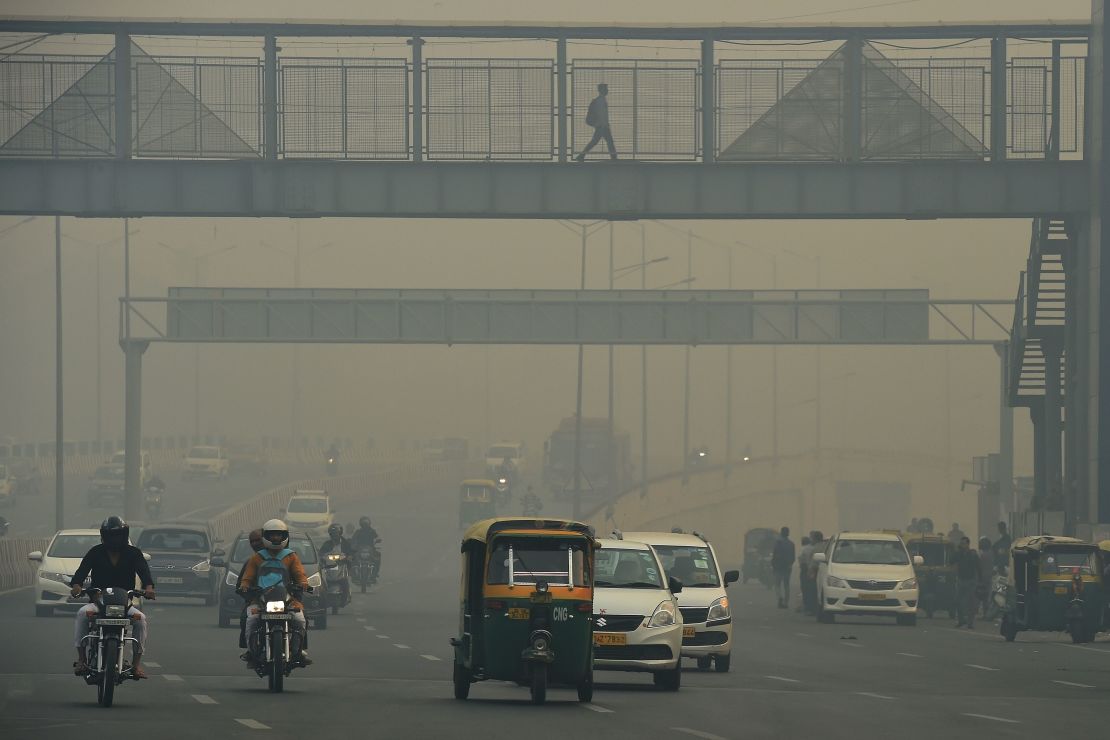A thick dark haze fills the sky above Singrauli, northeast India. Known as the country’s coal capital, the district is home to eight coal-fired power plants, producing enough electricity daily to power 16 million homes.
In India, around 75% of electricity comes from coal — meaning Singrauli is crucial to the government’s plans of providing power to all.
However, coal production is contributing heavily to air pollution. India is home to seven of the world’s 10 worst cities for air pollution, according to the 2018 AirVisual report. Singrauli is ranked 22. Diesel exhaust fumes, construction dust, crop burning and even the Diwali festival of lights are also fueling the problem.
According to the Health Effects Institute, 1.2 million deaths were caused in India in 2017 due to air pollution.
Ruta Kaur lives in Singrauli with her husband and three children. She says coal pollution is creating problems for her family.
“We have problems drinking water,” she tells CNN Business. “We have stomach complications; children are impacted too because of the coal. The coal dust gets into the house, it gets deposited on our food; there is a lot of difficulty.”
To mitigate these problems, Singrauli coal mining company Northern Coalfields has introduced measures such as spraying water on coalfields to decrease the spread of dust, phasing out the use of trucks to ferry coal in favor of trains, and decommissioning some power stations and replacing them with newer coal plants, which they claim have lower emissions.
Prabhat Kumar Sinha, chairman and managing director of Northern Coalfields, admits India is behind others in the world in moving to a cleaner energy supply. “But we are trying our best to make it up,” he says.

Climate change
The harmful effects of coal go beyond air pollution. As a major emitter of CO2, it also heavily contributes to global warming.
India is the third largest emitter of greenhouse gases in the world. It’s also very vulnerable to the effects of climate change. Intense heatwaves have become the norm during the summer, with temperatures reaching over 50 degrees Celsius (122 Fahrenheit) in some provinces. Last year, there were 484 heatwaves across the country, up from 21 in 2010. Since that year, more than 5,000 people have died as a result.
With India’s demand for energy set to double over the next decade because of a rapidly growing economy and population, shedding its coal dependency is a monumental challenge.
Ambitious plans
But the government of Prime Minister Narendra Modi has introduced some ambitious targets to tackle climate change and energy consumption.
India is investing heavily in renewable energy. It has increased its solar energy capacity from less than four gigawatts in 2015 to nearly 30 gigawatts — about 8% of its total energy capability.
The government is aiming for 175 gigawatts of renewable energy by 2022, with 100 GW to come from solar power, 60 GW from wind, 10 GW from biofuels and 5 GW from hydropower.
“We are accelerating the pace of renewables in a very, very big way,” says Amitabh Kant, CEO of National Institution for Transforming India, a government think tank.
“India’s biggest strength is not in coal but in the sun,” he adds. “I think in the next three to four years you will realize that the acceleration towards renewables will be phenomenal.”





